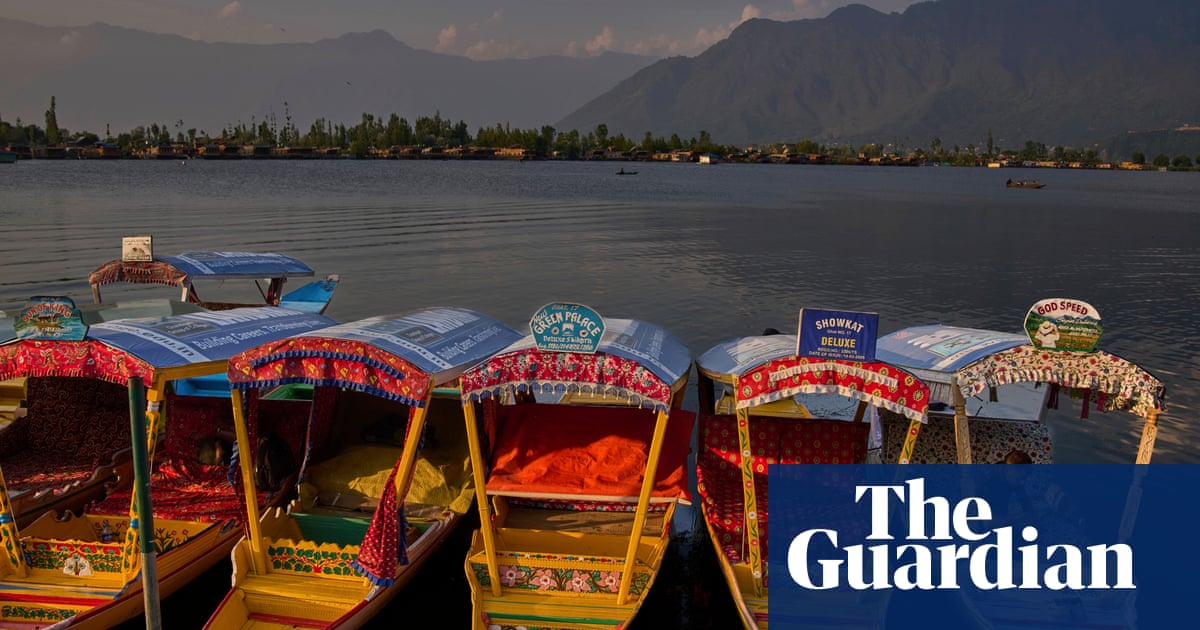Just over 26 years ago, thousands of Pakistani soldiers quietly made their way on to high, rocky ridges on the Indian side of the de facto border that divides the former princely state of Kashmir. The war that this rash operation triggered lasted much of the summer of 1999.
Reporting onthe conflictwas a bizarre experience. In high mountain valleys, at altitudes more suited to mountaineers than soldiers, howitzers hurled massive shells across icy, rocky peaks and infantry readied for bayonet assaults. A Pakistani artillery officer read memoirs of English cricket stars and the Qur’an in his bunker. As spent shrapnel and rock splinters thrown up by incoming Indian shells rattled against the walls of the canvas mess tent, his commander spoke of Pakistan’s “historic national and religious duty” to free Kashmir, partitioned 50 years before, and waited for servants to bring dessert.
The war of 1999 was the fourth between Pakistan and India and the third to have been triggered by Kashmir. If, over the decades, technology and regional politics have evolved dramatically, recent days have made clear that the animosity generated by the dispute over the region, said to be the most beautiful in south Asia, has not. Even if theceasefire agreed on Saturdayhas silenced the guns for now, there is little doubt that they will speak again.
For Pakistan, Kashmir’s Muslim majority means the region’s division is not just a historic injustice but an injury to the country’s original founding purpose as a home for the subcontinent’s Muslims. Just after the news of the ceasefire broke, Ishaq Dar, Pakistan’s foreign minister,posted on Xthat “Pakistan has always strived for peace and security in the region” but carefully stressed that it had done so “without compromising on its … territorial integrity!”
Kashmir means much more to India than a stunning backdrop for Bollywood movies. Many Indians would see losing the region, with its powerful historical and cultural significance, as an amputation of a vital part of their vast and diverse nation. India’s first post-independence leaders, secular and often left-leaning, made a point of fighting forKashmir. The last weeks have shown that the country’s current leaders, rightwing religious nationalists, will do so too.
If this ceasefire holds, then coming weeks will see a new battle: of narratives.
India has claimed thatLashkar-e-Taiba, the extremist group thatcarried out the massacrethree weeks ago of 25 tourists and a guide in Indian-controlled Kashmir that started the conflict, is merely a proxy for Islamabad. Pakistan has denied this. Maintaining a state of conflict in Kashmir, undermining Delhi’s control there and internationalising the conflict have been strategic goals of Pakistan’s hugely powerful military for decades. Islamic militant groups, some based in Kashmir, others recruited and based elsewhere, have been a key tool to achieve this. That no one in Pakistan’s security establishment had any prior idea of April’s attack seems implausible.
Pakistani officials seek to highlight underlying causes of violence: ongoing repression in Kashmir, the revocation by Delhiof the region’s autonomous statusin 2019 and multiple other grievances.
Back in 1999, like now, rhetoric from leaders in Delhi and Islamabad was sufficiently heated to prompt genuine international worries about an all-out war between the two nuclear-armed powers. Then, again like now, the sheer horror of what that might entail, even if the conflict remained conventional, sobered decision-makers on both sides.
Twenty years ago, a combination of Indian military success and US pressure brought about a shaky peace that survived a round of skirmishes a decade later until being broken again.
In this new confrontation too, Washington’s influence appears to have been key in bringing about de-escalation. This will not please Russia and China, both manoeuvring for greater influence in the region, even if the reported involvement of Turkey and Saudi Arabia is a useful reminder that the unipolar days of the late 1990s are long gone.
Casualties this time around have been mercifully low, and economic damage limited. The latter rather than the former may have weighed most heavily in the decision to call a halt to hostilities. Neither nation can afford the kind of destruction and disruption that moving to the next level of war might have entailed. There are ties that bind, as well as much that divides. Observers noted that though Delhi effectively suspendeda crucial treaty governing water access, it was not definitively broken.
As in previous conflicts, that of 1999 included, leaders in both India and Pakistan have stepped back from the brink, showing what Trump described in his inimitable way on Saturday as “Common Sense and Great Intelligence”. All know how much they have to lose.
